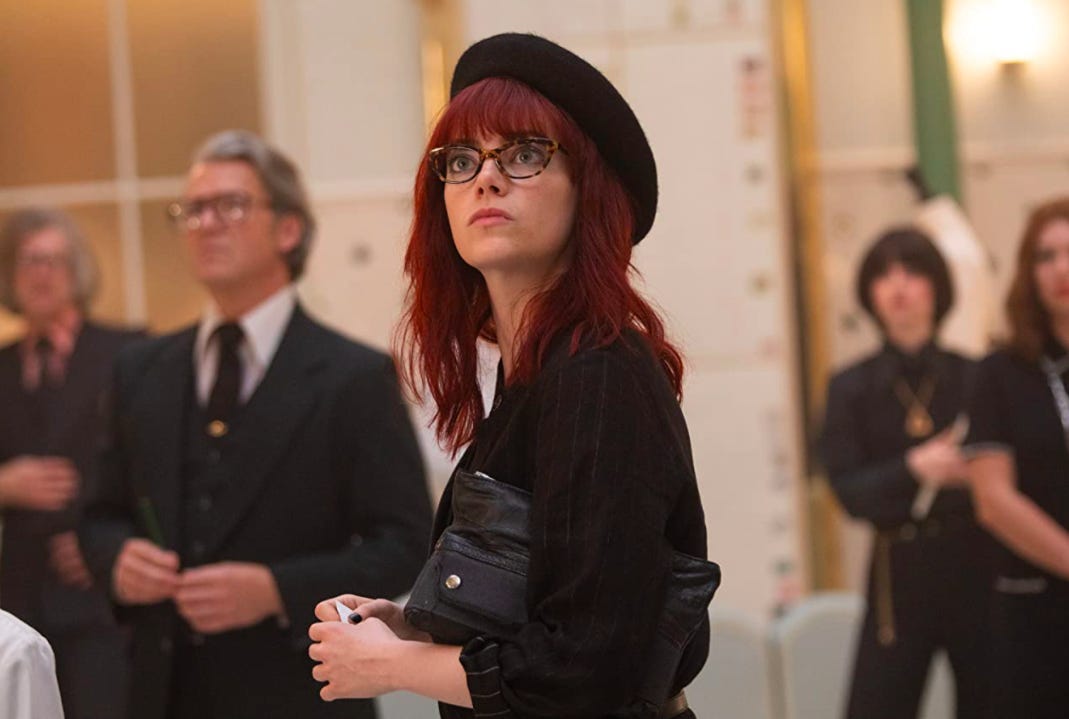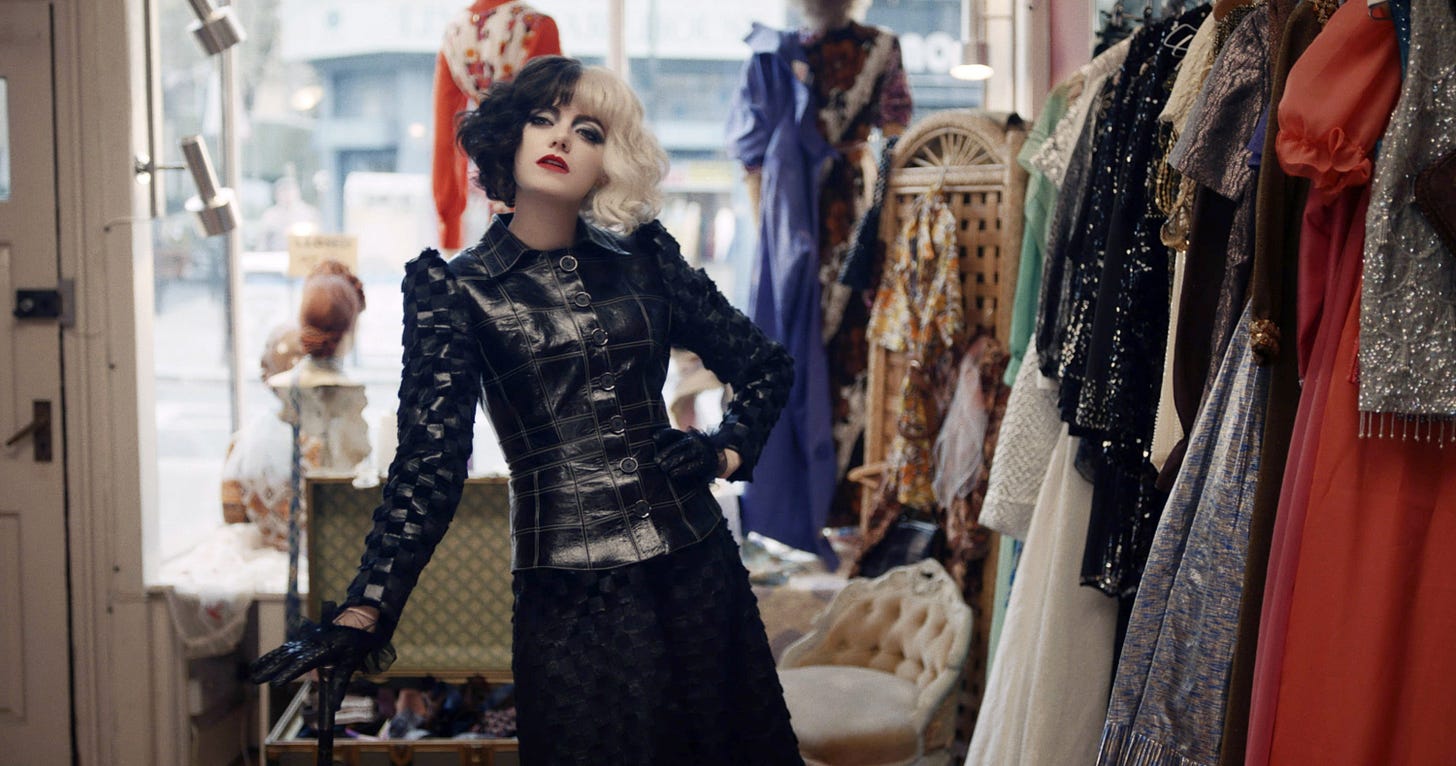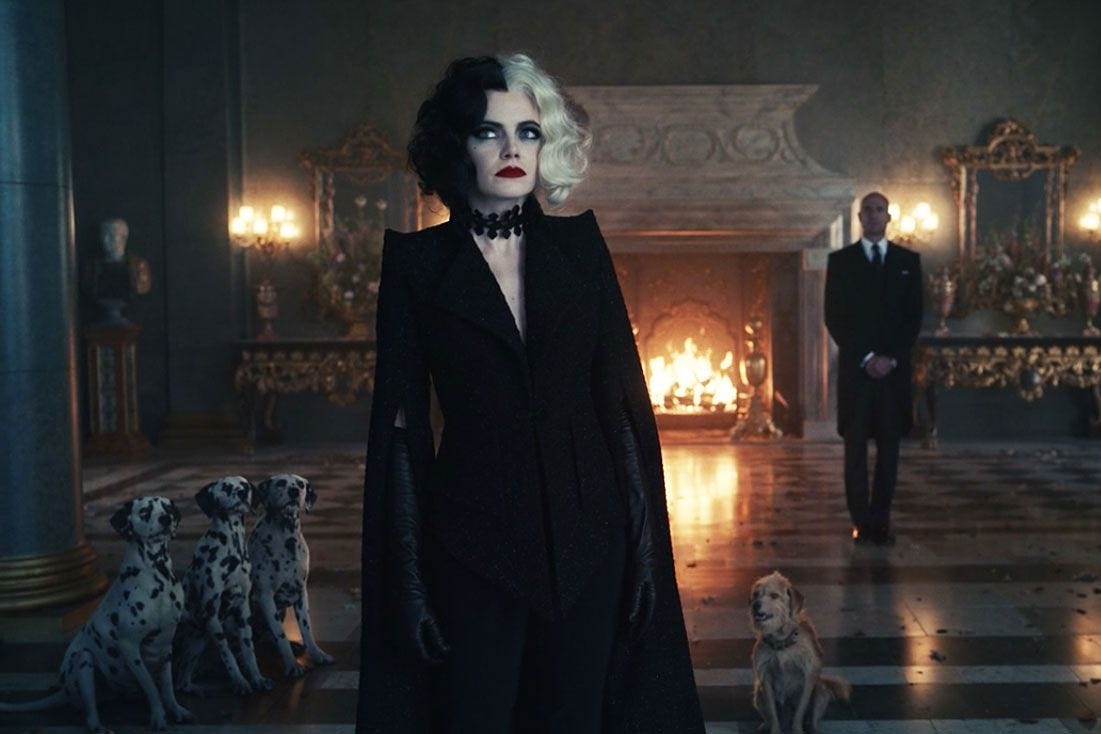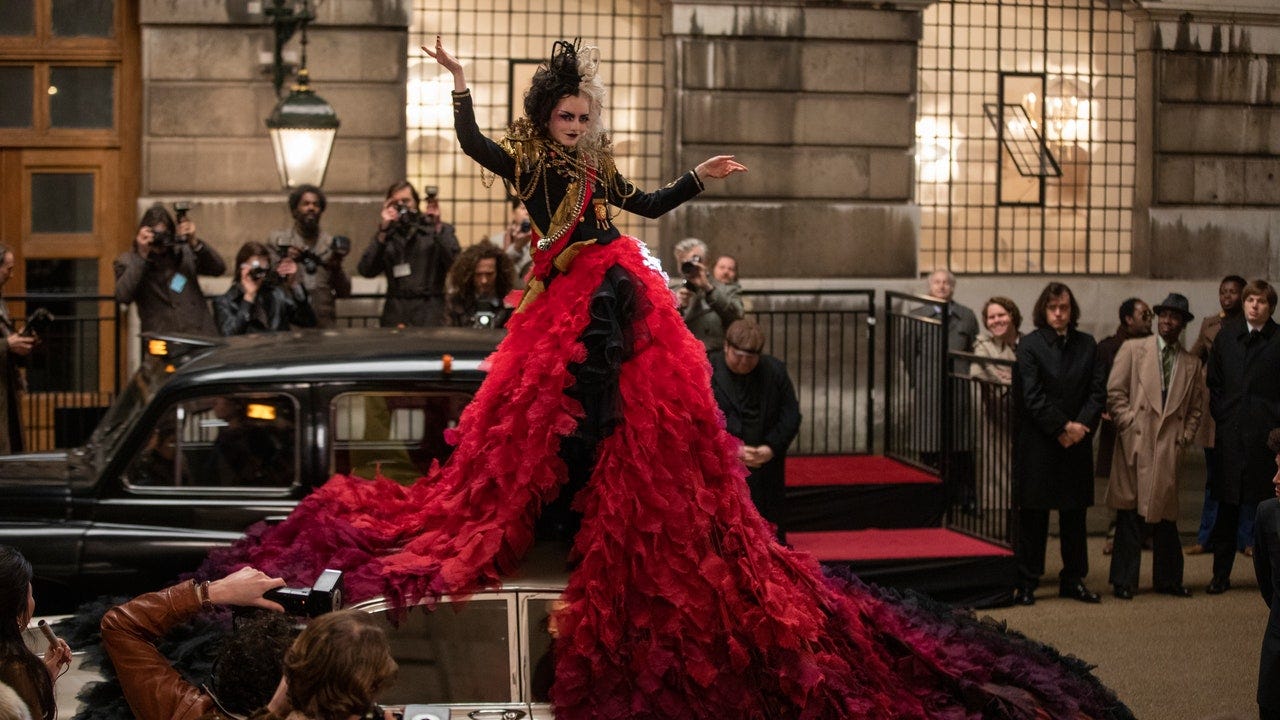Cruella: when the costumes tell the story
Disecting Jenny Beavans work for Disney's greatest villain comeback
To my English speaking readers: since my native language is Spanish, I apologise in advanced for any mistakes that you can find in the English version of this post. Thanks for your support! 😊
When, a few weeks ago, I talked about the importance of costume design in contemporary fiction, I left aside one example to talk about it separately, as it is not entirely contemporary, and it’s not particularly realistic either. And, since this is pretty much “costume season” I think now is the perfect time to talk about the amazing costume design in Cruella.
Cruella fits into the real action remake category that Disney has been producing for a while now. The film, though, doesn’t really adapt the movie that inspired it (101 Dalmatians), instead, it works as some kind of origins story about Cruella, one of the most iconic Disney villains.
Starring Emma Stone and Emma Thompson, the movie is set in London in the 70s, and it’s focused on the fashion world at the time. The young Estella (Cruella’s name before she became the villain we all know), played by Stone, tries to find a path in the fashion industry following the lead of The Baroness (Thompson), an iconic designer who hides dark secrets related to Estella’s past.
The film probably won’t make it to the big Disney classics list (and yet it’s far more enjoyable that some of their live action remakes), but it has something that others don’t: the costume design is a true WORK OF ART (yes, in capital letters).
Jenny Beavan was in charge of the costume design and won her third Oscar for it (the first two being for A Room With a View, in 1986, and Mad Max: Fury on the Road, in 2015).
The film relies on Beavan’s work to tell the story of the main character. With fashion as the center of her story, the first thing we know about Estella is that she liked to customise her school uniform when she was little.
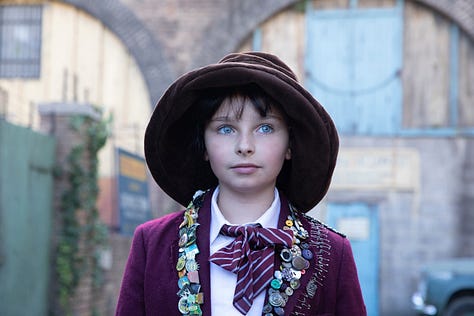
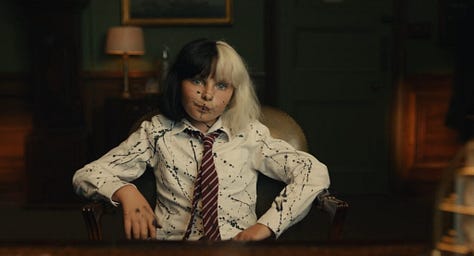
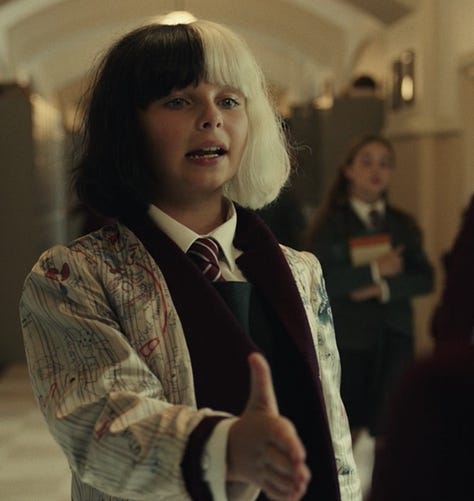
Years later, after moving to London, we see costumes that reflect three completely different styles for the grown up Estella.
First, we find out that it was Estella who made the elaborate costumes that she and her partners in crime used for their robberies (and Beavan created more than one example of these disguises for our delight). These amazing costumes don’t necessarily reflect Estella’s personality, but they do show an immense creativity and some weakness for eccentricity, that will develop as she becomes Cruella.
Regarding Estella’s own wardrobe, we could say it fits into a slightly restrained punk aesthetics. Estella is a rebel, but she’s learnt to hide it when she needs to (that’s why Cruella shows such a explosion of personality, she stops refraining herself). Dark colours, biker boots, tight silhouettes with unexpected volumes, structured shoulders… all of these will be her signature even in her more formal outfits, when she works for The Baroness.


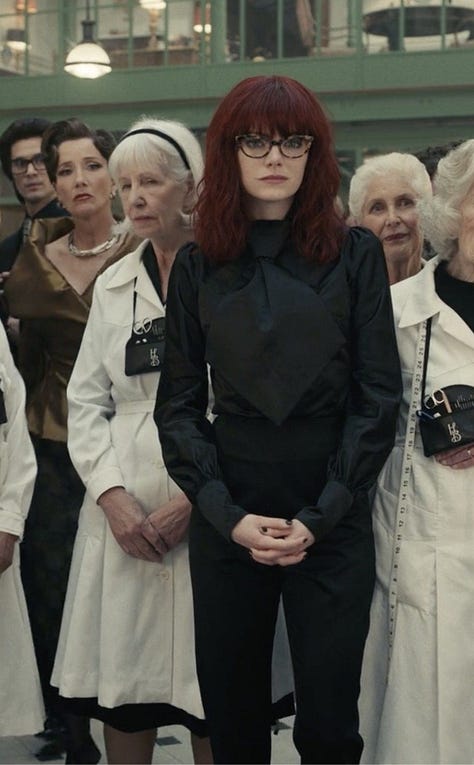
And, finally, Cruella. Cruella is all eccentricity and fun, she has no limits, and Beavan didn’t have them either when creating her costumes. Cruella shows two types of outfits: her day to day clothes and the outfits she wears for events were she competes with The Baroness (balls, parties, fashion shows…).
We could say that her day to day costumes are the edgier version of Estella’s wardrobe. They share certain elements, such as black as the main colour (the only one, really), the fitting silhouettes, structured shoulders… But, in Cruella’s wardrobe, lighter fabrics are replaced by leather and thicker materials that give her a more structured look, almost military (this is her war after all).
But, it is in those other appearances that we mentioned (the parties, the shows) in which Beavan’s work truly shines. Cruella’s gowns are true masterpieces. The silk cape that she burns away to reveal the spectacular red dress that was underneath, the motorcycling outfit with the gold sequinned pants and the message “The future” painted on her face, the amazing Dalmatian coat at the fashion show (connecting this film with 101 Dalmatians)… all of them are works of art.
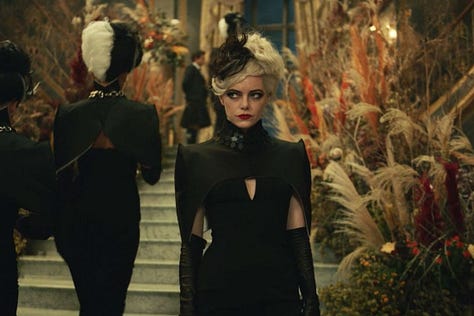



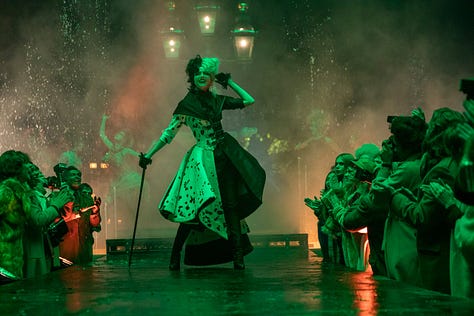
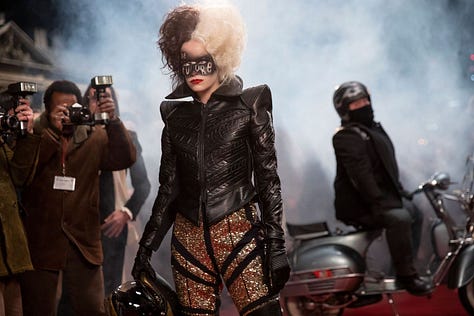
But there are two examples that truly deserve a standing ovation for Beavan.
First, the petal skirt she wears while standing on The Baroness’ car. For that long red skirt that covers the car completely they used more than 5000 organza petals (and they needed several takes until Stone was able to cover the car completely in just one move). On the top, she wears a military jacket with so many details that, if you look up close, you can she that there are miniature carriages and horses over the shoulder pads. An incredible work for just a few seconds on screen.
The second example I wanted to mention is the “garbage dress”. At one point, Cruella shows up to an event standing on the back of a garbage truck, pulling out meters and meters of fabric of what reveals to be her dress, sewn from different types of fabric, and sweeping the streets of London with it. According to the script, the pieces of fabric were The Baroness’ 1967 spring summer collection, hence the floaty fabrics and the pastel colours. Cruella shows here that she knows how to play dirty in style.
And, as if this wasn’t enough, Estella/Cruella’s costumes are not the only outstanding ones in the movie. Beavan also creates a very specific style for The Baroness, and makes it as cohesive as one would expect from the lead designer of a fashion firm. A bit less edgier that Cruella’s, and obviously reminiscent to Dior, The Baroness’ outfits would have been the star of any movie. Of any movie without Cruella, obviously.
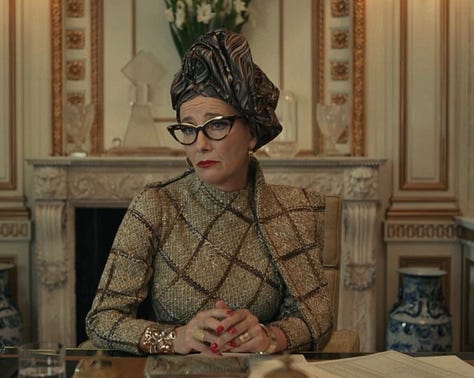

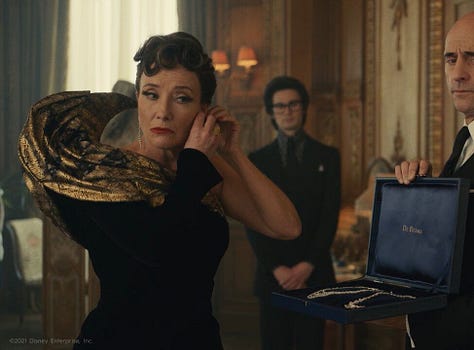

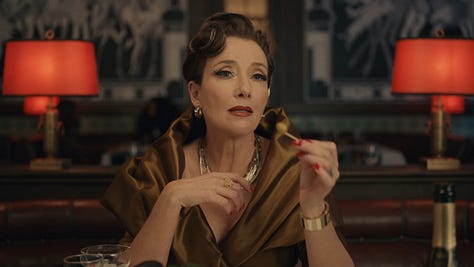
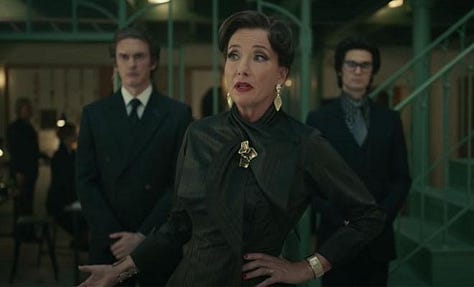
I could go on and on about Jenny Beavan’s work in this movie, but I think you get the idea. I just hope that, next time you see the movie, you pay a bit of attention to the incredible work of this costume designer. She deserves all the praises.








